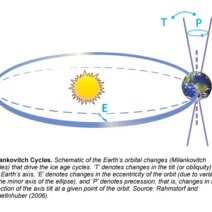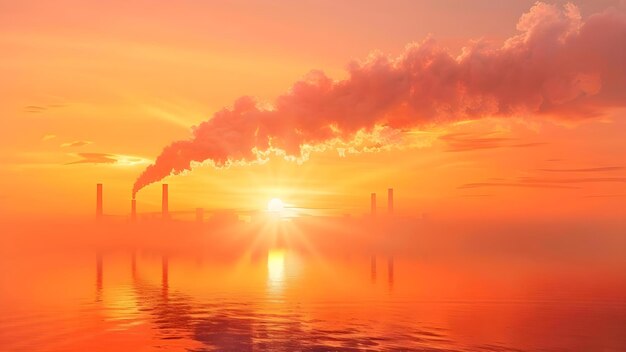Carbon dioxide (CO2) emissions act like an invisible tide, steadily rising and enveloping the delicate balance of our planet’s ecosystems. These emissions, predominantly from fossil fuel combustion, deforestation, and industrial processes, infiltrate our atmosphere, altering its composition and instigating a cascade of environmental repercussions. The ramifications of CO2 emissions are not merely abstract notions relegated to scientific journals; they are palpable, influencing weather patterns, wildlife habitats, and human health.
To comprehend the gravity of CO2 emissions, one must first appreciate the greenhouse effect, a natural phenomenon that warms the Earth’s surface. Much like a thick quilt enveloping a sleeping child, greenhouse gases, including CO2, trap heat from the sun. This is vital for sustaining life, yet excessive CO2 emissions throttle this process into overdrive, creating a feedback loop that exacerbates global warming. Each additional ton of CO2 is akin to adding an extra layer to that quilt, slowly turning our planet into an insufferable sauna.
As the Earth’s temperature gradually escalates, igniting the flames of climate change, weather patterns become erratic. Storms that once followed predictable trajectories now twist and turn with unprecedented ferocity, affecting everything from crop yields to infrastructure integrity. Increasing temperatures lead to the melting of polar ice caps and glaciers, releasing freshwater that disrupts oceanic currents. These currents, akin to rivers in the sea, regulate climate and nutrient distribution across the globe. Their disturbance invokes a chaotic symphony, where the predictable rhythms of nature devolve into discord.
Moreover, the direct impact of rising temperatures induces an alarming phenomenon known as ocean acidification. The oceans, which absorb approximately one-third of CO2 emissions, react chemically, transforming into a more acidic environment. This metamorphosis negatively impacts marine ecosystems; coral reefs, the rainforests of the sea, struggle to survive in these altered conditions. As reefs degrade, entire marine populations face the precipice of collapse. Just as a house of cards crumbles when its foundation is compromised, so too does the intricate web of marine life falter under the weight of CO2 emissions.
The terrestrial realm is not spared from the clutches of global warming. Increased CO2 levels stimulate plant growth initially, creating a verdant veneer that belies underlying distress. As ecosystems struggle to adapt, a competitive imbalance emerges. Invasive species, equipped to thrive in warmer climates, invade habitats, outcompeting native flora and fauna for resources. This biodiversity loss is alarmingly akin to losing pages from a beloved book; each species plays an essential role in the ecological narrative, and their disappearance irreversibly alters the storyline.
Furthermore, the implications of climate change extend far beyond environmental degradation; they encroach upon human health and security. Rising temperatures engender an uptick in heat-related illnesses and exacerbate the spread of vector-borne diseases. The spread of conditions such as malaria and dengue fever becomes increasingly probable as warmer temperatures create hospitable environments for disease-carrying insects. Moreover, extreme weather events, increasingly common due to climate change, ravage communities, displacing populations and instilling a sense of perpetual insecurity.
The socio-economic fabric of society is intricately woven with the threads of environmental health. As agricultural productivity declines, food security is compromised. Poor harvests lead to decreased crop availability, exacerbating hunger and disparity. The price of basic necessities spirals upward, engendering social unrest among communities already grappling with economic fragility. The intricate interconnections between environmental degradation and socio-economic stability underscore a stark reality: combating CO2 emissions is not merely an ecological imperative but a moral one.
Transitioning to a lower carbon future transcends technological advancements; it necessitates a cultural paradigm shift. Renewable energy sources like solar, wind, and hydroelectric power represent viable alternatives to fossil fuels, curtailing the relentless influx of CO2 into the atmosphere. The momentum of the green energy revolution is akin to the fabled phoenix rising from its ashes, imbuing communities with renewed hope and purpose. By embracing sustainable practices and fostering innovation, society can mitigate the impacts of climate change while securing a harmonious future.
In addition to technological solutions, individual actions also play a pivotal role. Small changes in daily behavior, such as reducing meat consumption, utilizing public transportation, and supporting local farming initiatives, contribute to a collective effort in lowering carbon footprints. Each conscious choice resonates like ripples in a pond, fostering a movement toward environmental stewardship that amplifies momentum exponentially. Education and advocacy are crucial components of this movement, awakening awareness about the implications of CO2 emissions and galvanizing action toward meaningful change.
As we confront the realities of climate change, it is paramount to recognize the urgency of our predicament. The invisible tide of CO2 emissions threatens to inundate not just our environments but the very essence of life itself. Every moment spent in inaction deepens the chasm of consequences we will inevitably face. The time to act is now—collectively, these actions can be the revolution that turns the tide, shaping a sustainable legacy for generations to come. The planet’s narrative is still being written; it is our responsibility to ensure it unfolds toward a future where harmony reigns, balanced against the backdrop of vibrant ecosystems and interconnected communities.





